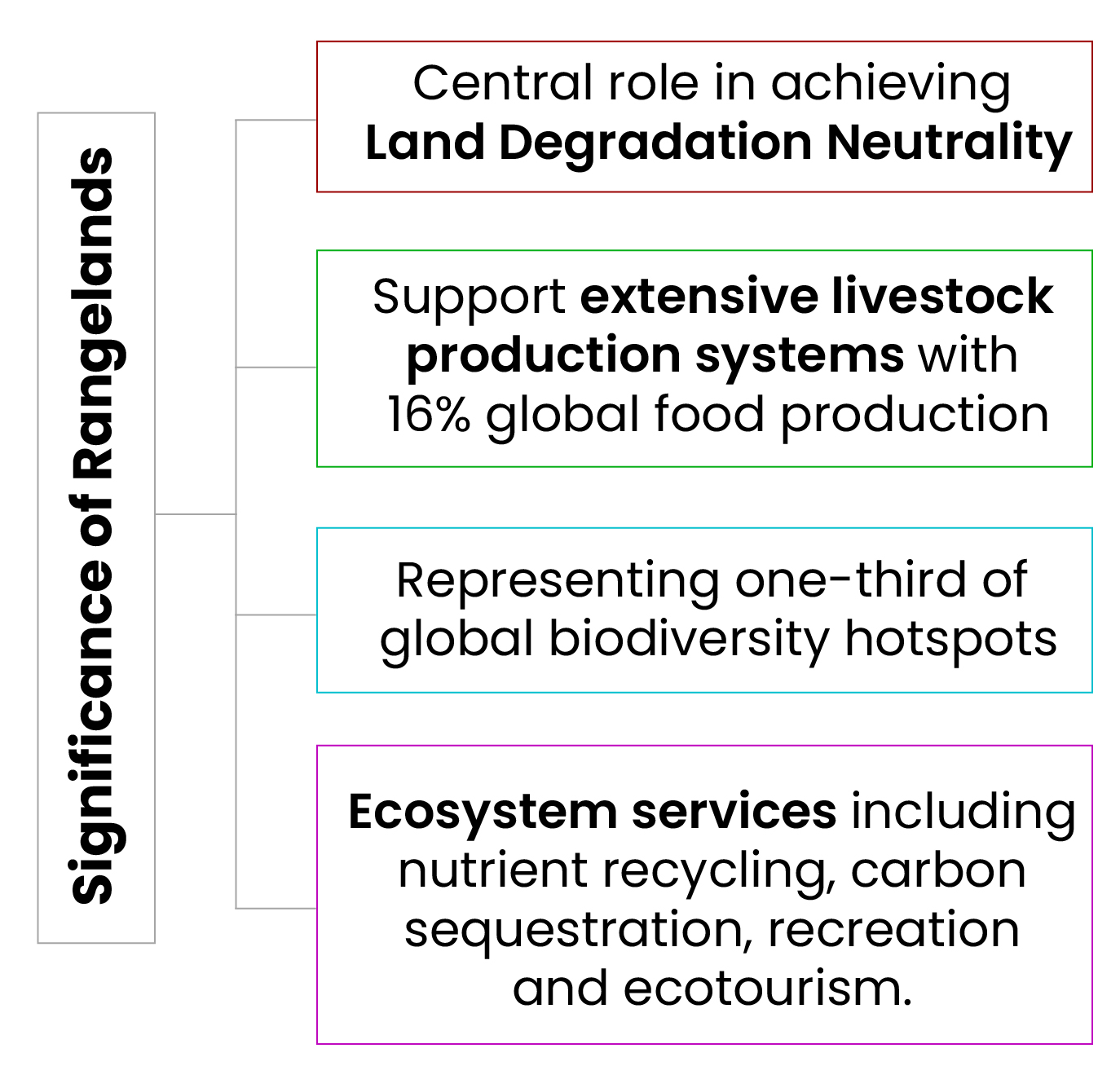This report by UN Convention to Combat Desertification (UNCCD) focuses on relationship between rangelands and their human communities, especially pastoralists, to identify approaches for rangeland protection.
- Rangelands are natural or semi-natural ecosystems grazed by livestock and/or wild animals.
- They often comprise a mosaic of ecosystems such as grasslands, savannahs, shrublands, drylands, deserts, steppes, mountains, open forests, and agroforestry systems.

Key highlights of report
- Rangelands cover over 54% of terrestrial surface, with around 78% occurring in drylands.
- Up to 50% rangelands are estimated to be degraded showing signs of diminished soil fertility and nutrients, erosion, salinization, alkalinization, and soil compaction inhibiting plant growth.
- Drivers of degradation include land use changes due to population growth and urban expansion, rapidly rising food, fibre and fuel demands, excessive grazing, abandonment, and policies that incentivise overexploitation.
Rangeland status in India:
- Indian rangelands occupy about 121 million hectares, and around 100 million hectares is considered underutilized.
- Pastoralists have been widely marginalized in Indian public policies, resulting in insecure tenure rights and access to their pool of common resources.
- In many states, pastoralists have been banned from forests and protected areas.
- Mining and energy projects also prevent their access to critical rangeland resources.
Key Recommendations
|



